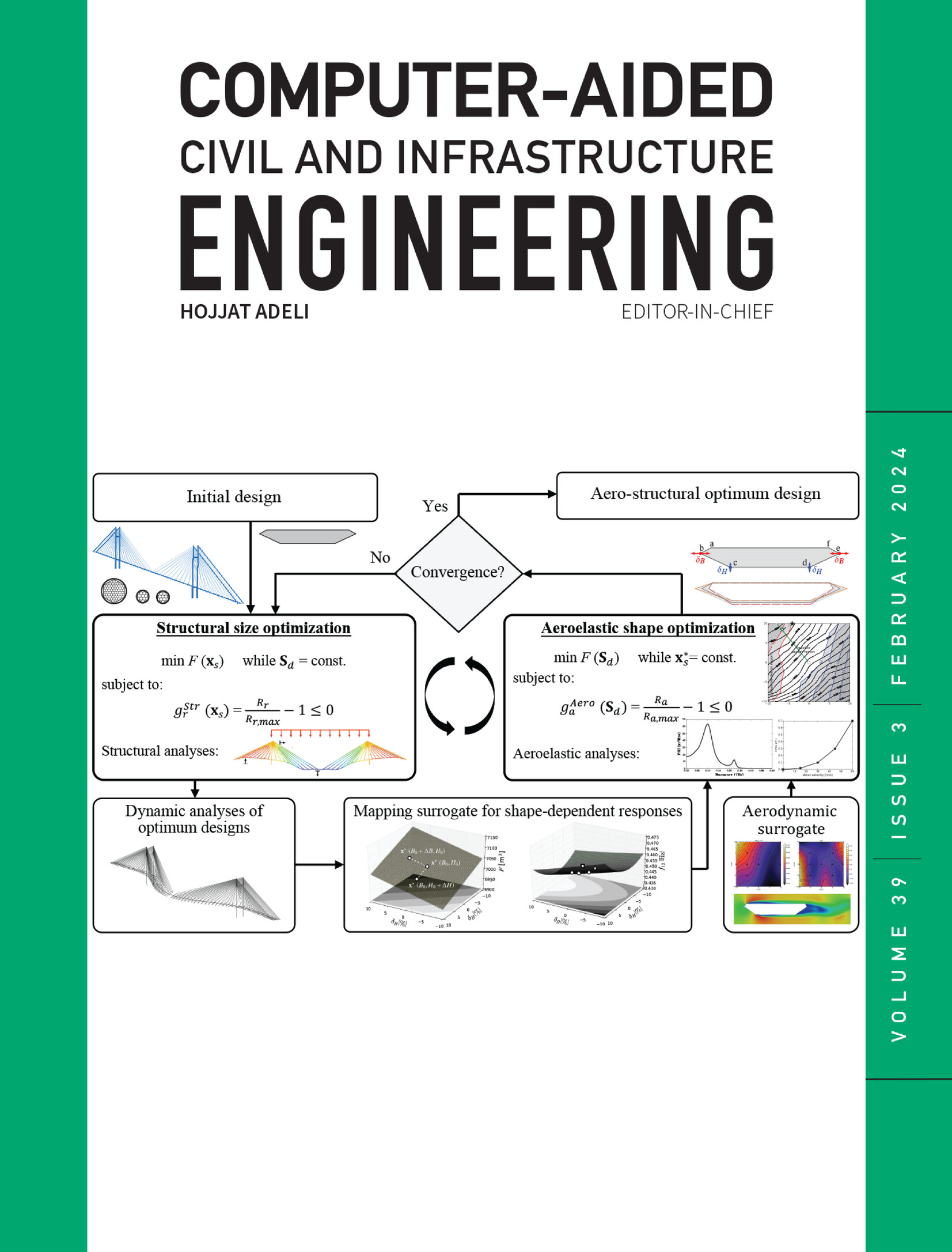基于计算机视觉深度学习的类脉冲地震动识别
IF 8.5
1区 工程技术
Q1 COMPUTER SCIENCE, INTERDISCIPLINARY APPLICATIONS
引用次数: 0
摘要
近断层脉冲型地震动会对长周期工程结构造成严重破坏。快速准确的识别方法对抗震设计至关重要。深度学习提供了一种解决方案,将类脉冲运动识别作为图像分类任务。然而,深度学习模型的应用面临着来自脉冲运动分类数据和模型的多重挑战。本研究的重点是通过综合策略优化合适的输入图像和模型架构。通过将原始时程转换为Morlet小波时频图、异常标记速度时程图、傅立叶振幅谱及其平滑图和像素融合图,实现了数据集的多样化。针对这些数据集,在图像分类任务中构建了两种类型的深度学习模型。通过集成自注意机制(SAM)来增强卷积神经网络(CNN),使其专注于局部图像特征。此外,该增强模型还增加了地震参数层,以减少对输入数据特征的依赖。本课题还采用了Visual Transformer,包括Vision Transformer (ViT)和Swin Transformer (swt)。增强后的CNN结果表明,TF具有更高的分类精度和收敛速度,优于其他图像,而双输入图像的性能较差。所有输入数据集在单参数矩量级(Mw)约束下的精度都高于断裂距离(Rrup)约束下的精度。所有输入数据集在Mw和Rrup两参数约束下的精度均高于单参数约束下的精度,其中TF的精度最高,双输入数据的精度有所提高。对于单输入图像,SwinT的性能与CNN+SAM相似,优于ViT,其中TF具有最高的精度。对于双输入图像,ViT优于swt,两者都优于CNN+SAM。在资源有限的环境下,单输入TF的增强CNN是最好的策略,Mw和Rrup的物理约束更有效,特别是对于双输入图像。本文章由计算机程序翻译,如有差异,请以英文原文为准。
Deep learning for computer vision in pulse‐like ground motion identification
Near‐fault pulse‐like ground motions can cause severe damage to long‐period engineering structures. A rapid and accurate identification method is essential for seismic design. Deep learning offers a solution by framing pulse‐like motion identification as an image classification task. However, the application of deep learning models faces multiple challenges from data and models for pulse‐like motion classification. This study focuses on suitable input images and model architecture optimization through a comprehensive strategy. The diverse datasets are realized by transferring the original time history into Morlet wavelet time‐frequency diagram, anomaly‐marked velocity time history, Fourier amplitude spectrum and its smoothed diagram, and pixel fusion diagrams. Two types of deep learning models are constructed in the image classification task for these datasets. A convolutional neural network (CNN) is enhanced by integrating the self‐attention mechanism (SAM) to concentrate on local image features. Additionally, a seismic parameter layer is added to this enhanced model to reduce reliance on input data features. Visual Transformers, including Vision Transformer (ViT) and Swin Transformer (SwinT), are adopted in this task as well. The results of the enhanced CNN demonstrate that TF outperforms other images with higher classification accuracy and convergence speed, and dual‐input image presents inferior performance. The accuracy of all input datasets under the constraint of a single‐parameter moment magnitude (M w ) is higher than that under the constraint of rupture distance (R rup ). The accuracy under the two‐parameter constraint of M w and R rup is higher than that of the single parameter constraint for all input datasets, in which the accuracy from TF is the highest, and that from dual‐input data is improved. The performance of SwinT is similar to CNN+SAM and better than ViT for single‐input images, in which TF presents the highest accuracy. For dual‐input images, ViT is better than SwinT, and both of them are better than CNN+SAM. In a resource‐limited environment, the enhanced CNN with single‐input TF is the best strategy, and the physical constraint of M w and R rup is more effective, especially for the dual‐input images.
求助全文
通过发布文献求助,成功后即可免费获取论文全文。
去求助
来源期刊
CiteScore
17.60
自引率
19.80%
发文量
146
审稿时长
1 months
期刊介绍:
Computer-Aided Civil and Infrastructure Engineering stands as a scholarly, peer-reviewed archival journal, serving as a vital link between advancements in computer technology and civil and infrastructure engineering. The journal serves as a distinctive platform for the publication of original articles, spotlighting novel computational techniques and inventive applications of computers. Specifically, it concentrates on recent progress in computer and information technologies, fostering the development and application of emerging computing paradigms.
Encompassing a broad scope, the journal addresses bridge, construction, environmental, highway, geotechnical, structural, transportation, and water resources engineering. It extends its reach to the management of infrastructure systems, covering domains such as highways, bridges, pavements, airports, and utilities. The journal delves into areas like artificial intelligence, cognitive modeling, concurrent engineering, database management, distributed computing, evolutionary computing, fuzzy logic, genetic algorithms, geometric modeling, internet-based technologies, knowledge discovery and engineering, machine learning, mobile computing, multimedia technologies, networking, neural network computing, optimization and search, parallel processing, robotics, smart structures, software engineering, virtual reality, and visualization techniques.

 求助内容:
求助内容: 应助结果提醒方式:
应助结果提醒方式:


